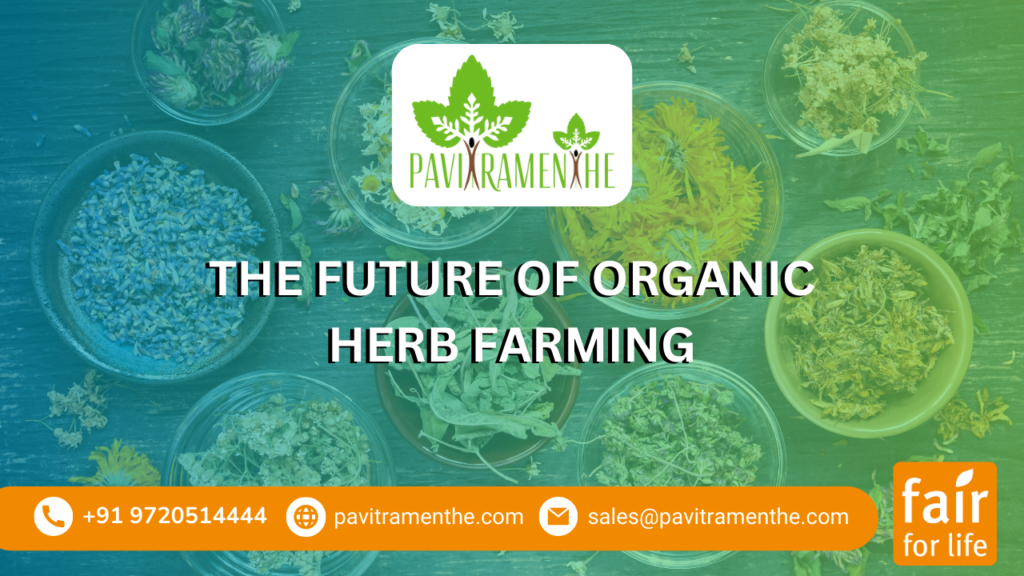Organic herb farming has gained significant popularity in recent years due to the growing demand for healthier and more sustainable food options. As we look towards the future, advancements in technology are poised to revolutionize organic herb farming practices. This article explores the latest innovations that are set to shape the future of organic herb farming, enabling farmers to improve productivity, reduce environmental impact, and meet the rising demand for organic herbs.
Precision Farming
One of the most significant: technological advancements in organic herb farming is precision farming. This approach involves the use of sensors, drones, and advanced data analytics to optimize farming operations. For instance, sensors can monitor soil moisture levels, temperature, and nutrient content, providing real-time data to farmers. This allows them to make informed decisions regarding irrigation, fertilization, and pest management, leading to better resource allocation and reduced wastage.
Drones equipped: with cameras and sensors can help farmers monitor crop health and detect any signs of disease or stress. This enables early intervention and targeted treatments, minimizing the need for chemical pesticides and improving overall plant health. Additionally, data analytics can analyze large volumes of information collected from various sources, providing valuable insights into optimizing farming practices and maximizing yields.
Vertical Farming: Vertical farming presents a promising solution to the limited availability of arable land for herb cultivation. By utilizing vertical space, farmers can grow herbs in stacked layers or vertically inclined structures using hydroponics or aeroponics systems. These systems provide controlled environments with optimal lighting, temperature, and nutrient delivery.
Vertical farming: offers several advantages for organic herb production. Firstly, it significantly reduces the need for water as it employs recirculating systems, minimizing waste. Secondly, the controlled environment minimizes the risk of pests and diseases, reducing reliance on chemical interventions. Lastly, vertical farming allows for year-round cultivation, eliminating seasonal limitations and ensuring a constant supply of fresh organic herbs.


Challenges and Solutions in Implementing Regenerative Farming:
Regenerative farming is an approach to agriculture that aims to restore and enhance the health of ecosystems, improve soil fertility, and promote sustainable farming practices. While it offers numerous benefits, implementing regenerative farming can also pose certain challenges. Here are some common challenges and potential solutions associated with implementing regenerative farming practices:
Knowledge and Education: Challenge: Many farmers may lack knowledge and awareness about regenerative farming techniques and the potential benefits they offer. Solution: Providing education and training programs on regenerative farming practices can help farmers understand the principles, techniques, and benefits involved. Collaborating with agricultural institutions, organizations, and experienced regenerative farmers can facilitate knowledge sharing and dissemination.
Transition Period: Challenge: Shifting from conventional farming methods to regenerative practices often requires a transition period, during which farmers may experience initial financial and operational challenges. Solution: Offering financial incentives, grants, and subsidies to support farmers during the transition period can alleviate the financial burden. Additionally, providing technical assistance and guidance to farmers during the transition can help them navigate the process more effectively.
Infrastructure and Equipment: Challenge: Implementing regenerative farming practices may require modifications to existing infrastructure and investments in specialized equipment. Solution: Government support and funding programs can assist farmers in upgrading their infrastructure and acquiring necessary equipment for regenerative farming. Collaborations with equipment manufacturers and technology providers can lead to the development of cost-effective and efficient tools specific to regenerative practices.
Monitoring and Assessment
Challenge: Tracking and measuring the progress and impact of regenerative farming practices can be challenging, particularly for small-scale farmers. Solution: Developing monitoring tools and methodologies, such as soil testing kits and remote sensing technologies, can help farmers assess the impact of their regenerative practices. Sharing case studies and success stories from other farmers can also demonstrate the benefits and encourage adoption.
Market Access and Consumer Demand: Challenge: Connecting regenerative farmers with markets that value and appreciate the benefits of regenerative products can be a hurdle. Solution: Developing strong marketing and branding strategies that highlight the regenerative aspects of the farm products can help attract consumers who prioritize sustainable and environmentally friendly options. Collaborating with local markets, restaurants, and community-supported agriculture (CSA) programs can create direct channels for regenerative farmers to reach conscious consumers.
Policy and Regulation: Challenge: Existing policies and regulations may not adequately support or incentivize regenerative farming practices. Solution: Engaging policymakers and advocating for supportive policies, such as tax incentives for regenerative farmers, sustainable agriculture grants, and streamlined certification processes, can create an enabling environment for regenerative farming. Farmers can also join forces with organizations and associations to collectively voice their needs and concerns.

